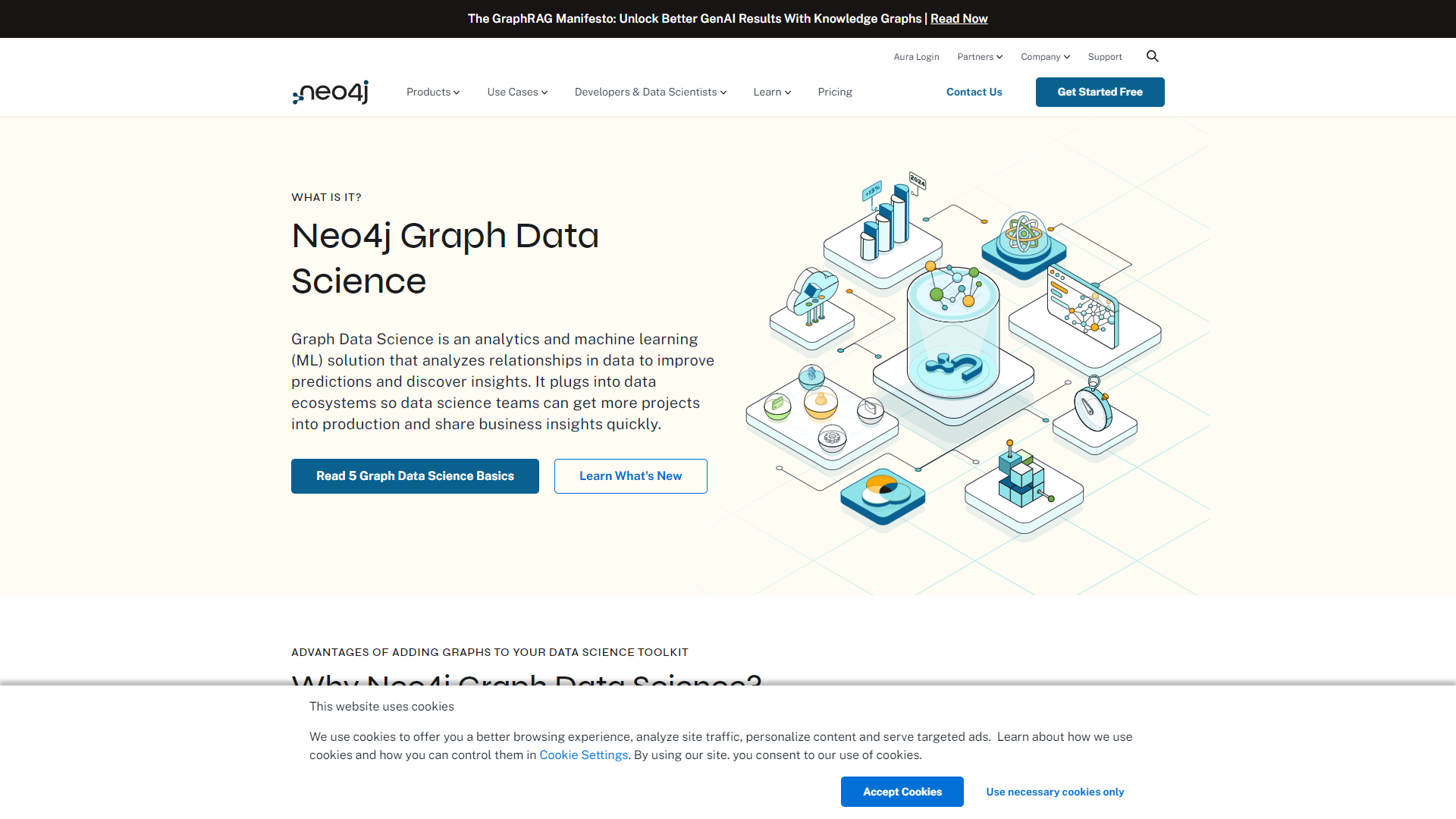Overview
Neo4j Graph Data Science is an advanced platform that helps businesses and researchers analyze their data in a way that highlights the connections between different pieces of information. Unlike traditional databases, which focus on table-based data, Neo4j uses a graph structure to represent and explore relationships, making it especially useful for complex datasets. It provides various algorithms and tools to gather insights, predict outcomes, and identify patterns, transforming raw data into valuable knowledge.
One of the main strengths of Neo4j is its ability to handle large amounts of data and complex queries efficiently. Its user-friendly features allow users to create visual representations of their data, making it easier to spot trends and draw conclusions. Whether you are working in finance, healthcare, or any other field, Neo4j can help improve decision-making by providing a clearer picture of your data landscape.
In addition to its powerful features, Neo4j offers extensive support and documentation, ensuring that users can make the most out of the platform. With a vibrant community and a wealth of resources at your disposal, Neo4j Graph Data Science is not just a tool; it’s a complete ecosystem for data analysis and exploration.
Pricing
| Plan | Price | Description |
|---|---|---|
| AuraDS Professional | Starting at $1.00 (Per Month) | AuraDS Professional is the fastest way to take your graph data science experiments to production with monthly billing. |
| AuraDS Enterprise | Contact Us | AuraDS Enterprise offers additional scale, security, premium support, and negotiable contracts. |
| Graph Data Science Enterprise | Contact Us | Neo4j Graph Data Science is a self-hosted offer, available on-premises or in the cloud, with annual licensing. |
Key features
Graph Algorithms
Contains a wide range of algorithms for clustering, classification, and pathfinding.
Data Integration
Easily integrates with various data sources and formats, including CSV and JSON.
Real-time Analytics
Provides real-time insights into data relationships and trends.
Scalability
Capable of handling large datasets without sacrificing performance.
User-friendly Interface
Features an intuitive interface that simplifies complex queries.
Community Support
A large community that shares knowledge, tools, and best practices.
Visualization Tools
Offers tools for visualizing data relationships and insights.
Integration with Other Tools
Compatibility with popular programming languages like Python and R.
Pros
- Comprehensive FunctionalityProvides a full suite of graph-specific algorithms and tools.
- User-friendlyEven beginners can navigate and utilize the platform effectively.
- Strong CommunityActive user community for support and shared resources.
- High PerformanceHandles complex queries swiftly without compromising speed.
- FlexibleAdapts to various data types and integrates well with existing systems.
Cons
- Learning CurveSome users may find advanced features difficult to master at first.
- CostCan be expensive for small businesses or startups.
- Resource IntensiveRequires significant computing power for large datasets.
- Limited Offline SupportPrimarily designed for online use, which may not suit all environments.
- Can be OverwhelmingThe vast number of features may be too much for some users to start with.
FAQ
Here are some frequently asked questions about Neo4j Graph Data Science.
It is a platform designed to analyze and visualize data relationships using graph algorithms.
It is suitable for businesses, researchers, and anyone wanting to understand complex data.
Basic programming knowledge can help, but there are many user-friendly features for beginners.
It offers algorithms for clustering, classification, recommendation, and more.
Neo4j offers a free tier, but advanced features may require a paid subscription.
It can connect with programming languages like Python, R, and tools such as Jupyter.
Yes, Neo4j is designed to efficiently manage large amounts of data.
Support can be found through Neo4j's documentation, community forums, and user groups.

